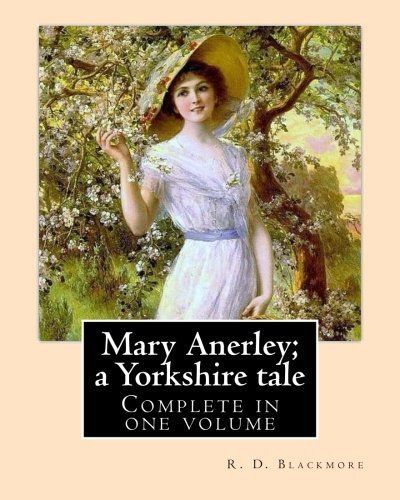
Mary Anerley A Yorkshire Tale
Mary Anerley: a Yorkshire tale is a three-volume novel by R. D. Blackmore published in 1880. The novel is set in the rugged landscape of Yorkshire's North Riding and the sea-coast of its East Riding. Plot introduction The story of Mary Anerley opens in the year 1801, at Scargate Hall, "in the wildest and most rugged part of the wild and rough North Riding"; the first chapter being practically a prologue, which sets forth the strangely dramatic death of Squire Philip Yordas just after he had made a will disinheriting his son Duncan. Thus Scargate Hall, when first described to the reader, is the property two sisters, Philippa Yordas and Eliza Carnaby. Mr. Jellicorse, the family lawyer, comes by chance upon evidence of a fatal flaw in the sisters' title to the estate, and rides over to make them acquainted with this unpleasant fact. In the sixth chapter of the book we are introduced to Anerley Farm, a place about a hundred and twenty miles from Scargate Hall, and the home of Mary Anerley.As Mary rides down the hollow of the Dyke on the same morning on which Mr. Jellicorse leaves Scargate Hall, she falls in with a man who is running for his life from other men who are pursuing him and shooting at him.Acting on the impulse of a moment, she shows him a place where he can hide. This man is Robin Lyth, who as a child was found washed ashore in a little cove north of Flamborough Head, and raised by foster parents. He is on the run from Captain Carroway, a coastguard officer. Love blossoms between Mary and Robin Lyth, but many obstacles interfere with true love's course...... Richard Doddridge Blackmore (7 June 1825 - 20 January 1900), known as R. D. Blackmore, was one of the most famous English novelists of the second half of the nineteenth century. He won acclaim for vivid descriptions and personification of the countryside, sharing with Thomas Hardy a Western England background and a strong sense of regional setting in his works. Blackmore, often referred to as the "Last Victorian," was a pioneer of the movement in fiction that continued with Robert Louis Stevenson and others. He has been described as "proud, shy, reticent, strong-willed, sweet-tempered, and self-centred." Apart from his novel Lorna Doone, which has enjoyed continuing popularity, his work has gone out of print. Biography: Richard Doddridge Blackmore was born on 7 June 1825 at Longworth in Berkshire (now Oxfordshire), one year after his elder brother Henry (1824-1875), where his father, John Blackmore, was Curate-in-charge of the parish. His mother died a few months after his birth - the victim of an outbreak of typhus which had occurred in the village. After this loss John Blackmore moved to Bushey, Herts, then to his native Devon, first to Kings Nympton, then Culmstock, Tor Mohun and later to Ashford, in the same county.[2] Richard, however, was taken by his aunt, Mary Frances Knight, and after her marriage to the Rev. Richard Gordon, moved with her to Elsfield rectory, near Oxford. His father married again in 1831, whereupon Richard returned to live with him. Having spent much of his childhood in the lush and pastoral "Doone Country" of Exmoor, and along the Badgworthy Water (where there is now a memorial stone in Blackmore's honour), Blackmore came to love the very countryside he immortalised in Lorna Doone.......